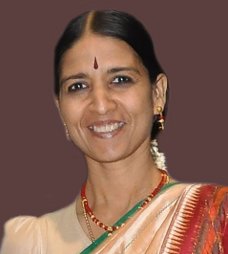
|
 |

|
 |
Is it time to rethink the beloved nayikas? - S. Janaki e-mail: esjay60vasan@gmail.com September 22, 2024 The nayika holds a very important place in Indian art; she is the heroine of the story and is an integral part of most presentations in the performing arts. In classical dance, the nayika holds sway centrestage - most often describing her love for the nayaka/hero who is not with her. She adorns herself for his return, she waits for him, she pines for him, goes through all the avasthas or emotional states and sends her friend or messengers to convey her sorrow in separation, urging the hero to come to her. The nayikas, who hold the pride of place in the performing arts, are numerous and of various types. So one wonders why the different classifications of the nayikas are given mostly relating to her nayaka or based on her reactions in love sport! We have classifications of the nayika as mugdha, madhya and pragalbha based on her experience specifically in the art of love. Sringara is indeed the king of rasas and keeps the world going, but it is not the be-all and end-all of existence, is it? In most love stories, the woman goes through the typical situation of uncertainty and waiting - which is brought about by the hero: her life gets determined by the acts of the man. The nayika classifications are not based on her own personality, qualities, attributes or her integral character, but in relation to the hero. We have nayikas like the Sweeya (married, faithful and loyal) to her husband; Parakiya (married to one man, but in love with another); Samanya (feels free to court without restrictions, or for a price); Jyeshta (the senior or preferred one -- preferred by the man of course!). This list is not exhaustive. Then of course, the nayika is classified according to her attitude and reactions towards men. We have the very popular and beloved Ashta-Nayika (a collective name for eight types of heroines) who have been richly illustrated in Indian painting, literature, sculpture as well as Indian classical dance. One cannot compartmentalise each of the ashtanayika, as all the nayikas go through most of the love sentiments. The eight nayikas represent eight different states (avastha) -- in relation to the nayaka. The Vasakasajjika adorns herself as she waits for her lover. The Virahotkanthita is the distressed heroine pining for her lover who is preoccupied and fails to return home. Kalahantarita is a disheartened heroine separated from her lover with whom she has had a quarrel, and later repents. The Khandita is an enraged heroine, angry and offended because of her lover's infidelity. The Vipralabdha is a heroine who waits for her lover who has deceived her. These are but brief descriptions of some of the ashtanayikas. The nayika and the sringara nayaka are both supportive determinants for love, but it is interesting to note that the nayaka classifications are mostly based on his own qualities and attributes and not in relation to the nayika. It is somewhat annoying that the heroines are portrayed on the basis of their "relationship's qualifications" rather than on their individual qualities, personal attributes and integral character. Of course, there is one classification of nayikas based on character and temperament like the uttama, madhyama and adhama. The study of Nayakas and Nayikas covers the entire gamut of human emotions and psychology. The leisurely, languorous life of the past has given way to the fast paced, action-filled life we see around us today. The new generation of dancers are unable to connect or identify themselves with some of the characteristics and emotions of the lovelorn, waiting nayikas of yore. Even given the same circumstances, the women of today and tomorrow may react very differently. Lifestyles and attitudes have changed. There are single women, married women, homemakers, qualified professionals and many more with a mind of their own. Can we not create new classifications of women to keep up with the changing times? This is NOT a call to disregard or discard the existing classifications of the nayikas but to think, rethink and add to the classifications to be in tune with the times. The old classifications will always serve as reference for dancers to understand the context, situation, love and life of the nayikas whenever they dance the traditional compositions. The practise of any art draws upon its theory. With several new compositions by contemporary composers coming into the repertoire, it is a good time to update theory to make the practice of the art more relevant and convenient for the questioning gen-next dancers. Artistes and scholars can put their heads together to work out new classifications of nayikas and nayakas to be in step with the times and to keep the art relevant for generations to come.  S Janaki is a senior Arts commentator and journalist, former Editor-in-Chief of SRUTI magazine, Consultant with the Madras Music Academy for Content & Publications, core committee member of Natyarangam (Dance wing of the Narada Gana Sabha), a Vice President of ABHAI, and a popular speaker. Response * Why were the nayikas in ancient times always defined in relation to the nayaka? Was it because society was male-dominated? Did women in those times lack an independent identity? These questions deserve deeper study. The perspective shared in this article about reinterpreting nayikas in the context of today's generation feels both relevant and essential. - Sarika Rahane (Nov 27, 2024) Post your comments Pl provide your name and email id along with your comment. All appropriate comments posted with name & email id in the blog will also be featured in the site. |